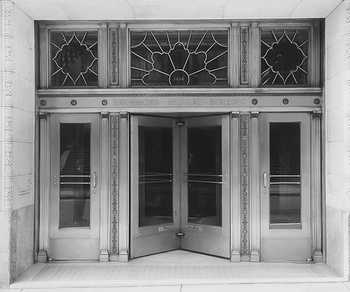According to the United States Chamber of Commerce, 75 percent of employees steal from their workplace and most do it repeatedly. Security Magazine reported employee theft statistics showing an upward trend. And while some of that stealing is in the form of minor items like office supplies, larger, more involved thefts take place on a regular basis.
Nowhere is this seen more frequently than in retail operations. A retail atmosphere, for many reasons, offers prime opportunities for would-be internal thieves to steal products. We work with retailers of all sizes to help prevent theft. Based on that experience, here are some tips to stave off the affect of sticky-fingered employees.
Why do employees steal?
Before learning how to prevent employee theft, it’s best to know why they do it in the first place. Over the years, we have seen the workplace mentality of some employees shift from one of responsibility to one of entitlement. When an employee feels like he/she is not paid enough, or is over-worked, or the job is beneath their level of skills, they empower themselves with an attitude of “I deserve this, ” for whatever it is they plan to steal. Conducting regular check-ins with your employees, asking them about their job satisfaction, can help. Many times, employees simply want to know that they are being heard and that someone cares about them. With that attitude, they may be less likely to feel justified in stealing.
The seasonality of retail work is another cause of employee theft. The temporary nature, and relatively lower compensation compared to full-time positions, fuels some of these employees’ belief that “taking this one thing won’t really matter and, I’m gone in a few weeks anyway.” In employee screening interviews, we have had workers admit to this mindset. It is especially prevalent during the holiday season as these workers are also laying out a lot of money for gifts, so picking one up for free, even if illegal, helps with their financial burden.
How prevalent is employee theft?
The Federal Bureau of Investigations (FBI) reports call employee theft the “fastest growing crime in America.” Annually, US retail companies lose more than $37 billion from stolen products. Time theft is another consideration. When employees take work time to check their personal e-mail, text with friend, go on Facebook, Twitter or other social media platforms, or just simply take unauthorized breaks, they are stealing time since they are not doing the job they are being paid to do. According to the FBI, this type of theft costs all U.S. companies a combined $500 billion annually. Add to that other types of theft such as using company equipment for personal use and the problem adds up to big costs for companies.
Screening can prevent theft
George Washington once said, referring to bad seeds, “Bad seed is a robbery of the worst kind: for our pocketbook not only suffers by it, but your preparations are lost and a season passes away unimproved.” And so it is with hiring employees - a “bad seed” can cost you both in money and in wasted time.
We stress to companies that they carefully screen employees, even part-time and seasonal hires. During this screening process, check their references. Unfortunately, many people lie on their applications and a quick call to their references can easily reveal a falsified work record. You will also want to find out from the applicant why they left their past positions, possibly uncovering a pattern that might not suit your position. Did they leave on good terms? If not, why not? Did they change jobs often and if so, why?
While you still can, run a credit check to determine if the applicant has a credit issue that could be creating financial pressure, which could lead to a need to steal. I say “while you still can” because there is a movement lately to prevent employers from checking an employee’s credit. In fact, several states have made it against the law. Check with your local government and/or state to determine if you are able to run this check.
If you have the means, a drug screening is also advised. While many will claim on their applications that they do not take drugs, a simple screening can reveal otherwise. Sometimes, even the threat of having to take a drug screen is enough to deter several people from applying in the first place.
Use physical space to reduce risks
The physical space in which employees work can also be adjusted to prevent theft. An assessment of the interior and exterior of the building(s) is needed. If your space has security cameras, are they picking up all areas or, are there some blind spots? If so, adjust them or add other cameras to ensure you are getting full coverage. Does the store layout invite theft by providing hiding spots for product and easy, discreet access to exits? Reconfigure the space so that exit points are free and clear of obstructions while also being well lit to deter nefarious activity. Implementing an employee control point can also reduce theft opportunities by having employees enter and leave through an entry/exit with a system for logging their time on site. For larger operations, we recommend having an embedded security professional who can monitor activities, create an “always there” presence and minimize the risk of employees walking off with your merchandise!
No plan will eliminate employee theft 100 percent. As the saying goes, “where there’s a will, there’s a way.” But if you implement these recommendations, you are sending a strong signal to future thieves that you are taking security seriously.
Question for Comment: What are steps you have taken to prevent employee theft? Did they work?





